Resting during a triathlon swim
Can you rest during a triathlon swim? Will you be disqualified if you ask for assistance? We explain everything you need to know about resting during a triathlon swim
Many triathletes experience anxiety about the swimming leg of a triathlon. If you are new to swimming, then it can be intimidating to jump into a pool or the ocean while surrounded by other people. You may also be worried about completing the entire triathlon swim without resting. To help build your confidence before a triathlon, we will be outlining how you can rest during a triathlon swim without being disqualified.
Is resting during a triathlon swim allowed?
In short, yes you are allowed to rest during the swim leg of a triathlon. Health and safety is very important in triathlon races and people need to be allowed to stop and rest if they are struggling.
Resting during a triathlon pool swim
In a pool, it should be relatively simple to stop at the end of the length to take a breather. Try and do this in the shallow end so you can put your feet down. Just make sure you aren’t getting in the way of other athletes.
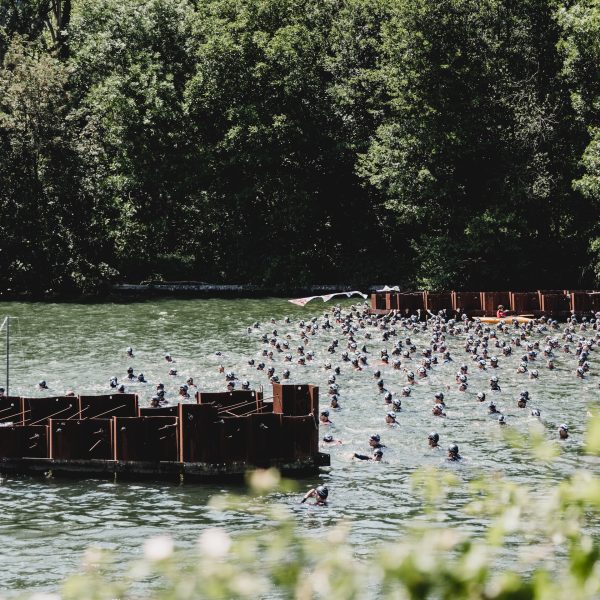
Resting during an open-water triathlon swim
The key thing to remember when using objects to rest is that you are not allowed to make any forward progress. You should not be gaining an advantage; it should just be an opportunity to rest.
Signal for help
Most triathlons with an open-water swim will have lifeguards on kayaks or rescue boards to make sure people are safe. If you are struggling, you can raise your arm in the air and one of them will come to your assistance. You can then hold on to their board or kayak to get some rest.
Tread water
If you’re able to, treading water is a good way to catch your breath and regain your composure. It can still be a little tiring but allows you to take deep breaths and gives you a view of your surroundings.
Float on your back
If you feel comfortable, you can just float on your back and catch your breath. This will be easier if you wear a wetsuit because of the added buoyancy. Alternatively, if it is shallow enough then you can just stand up to rest.
Hold on to a buoy
If there is something in the water like a buoy or stationary boat, you are allowed to hold on to them to rest. Just be careful not to get tangled in ropes or get in the way of other competitors.
What Stroke Are You allowed to swim?
In most races you are allowed to use any stroke you like to complete the swim. Generally, freestyle is the most common as it is the fastest and most efficient stroke. However, breaststroke can be a great choice for beginners who may feel short of breath. You’ll need to be careful with breaststroke though as it can be easy to kick other competitors. Backstroke is another option, but you may need to clear this with the race organisers as it can look like a swimmer asking for help.
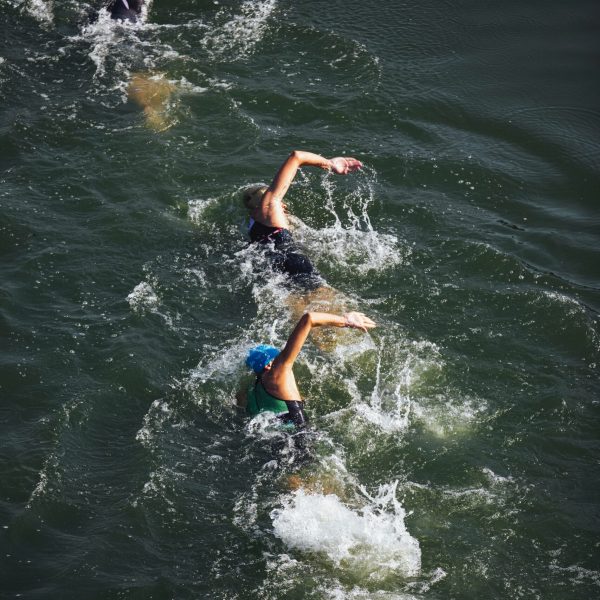
Is there a cut-off time for the swim?
Most races will have a cut-off time to ensure that volunteers are not waiting around all day for athletes to finish. This time will vary by distance and by race so it’s best to check with the organisers of your race to be sure. The cut-off times are usually generous so unless you need to keep stopping to rest you should be fine.
For example, for an Ironman swim the cut-off time is 2 hours 20 minutes. To finish before this, you need to average a pace of 3 minutes 41 seconds per 100 meters.
What to wear in a triathlon swim?
For a pool swim you can just wear a swimsuit, although a tri suit is preferable as you can wear it for the entire race. The same applies to open-water swims in warm water.
However, if the water temperature is below 61°F (16°C) then wetsuits will be mandatory. Unless the temperature is above 78°F (25.5°C), we recommend wearing a wetsuit as the added buoyancy can improve your swimming form. For a full look at triathlon wetsuit rules check out our article here.
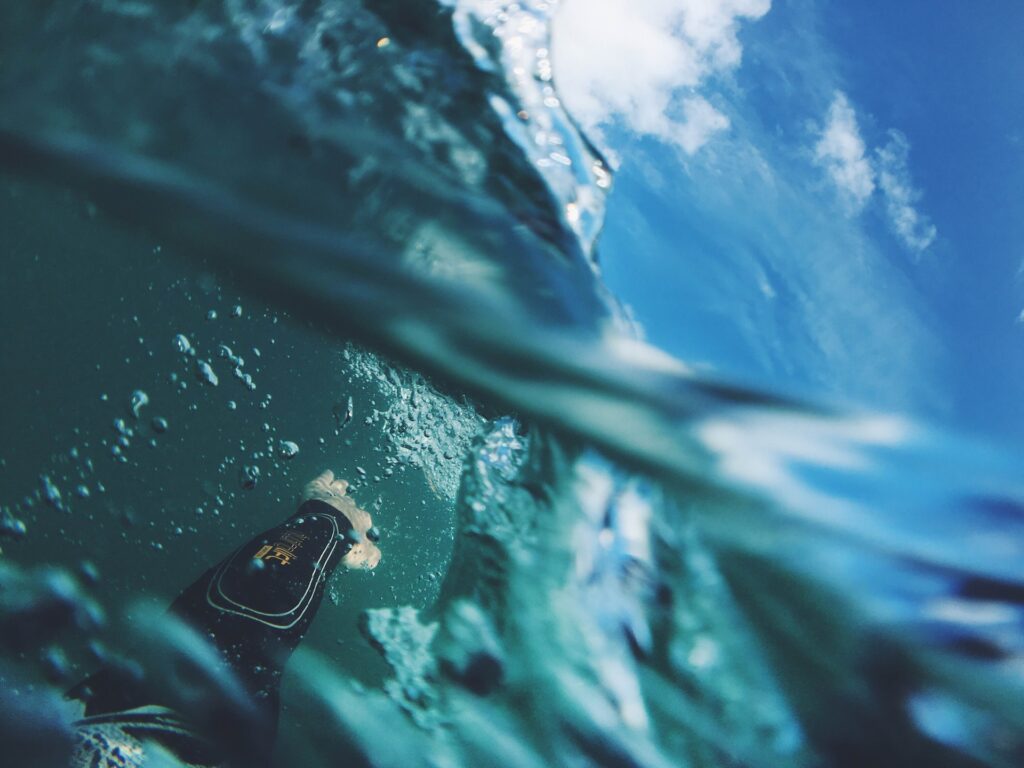
First open-water triathlon swim advice
Practice in open water
Practicing before the race is very important as open-water swimming is quite different from a pool swim. The waves and currents can throw you off course and the cold can make it harder to breathe. Getting more comfortable with these conditions will allow you to focus on your sighting and form. Make sure you practice in the same kit you’ll be wearing on race day so you get used to it.
Practice sighting
Sighting well is crucial to make sure you stay on the course and don’t swim further than you need to. It involves slightly lifting your head every few strokes to check you’re going in the right direction. You can practice the movement in a pool before testing it in open water.
Get comfortable with the distance
You will be more confident before the swim if you know you can handle the distance. Gradually increase the distance of your training swims until you reach the race distance. Focus on maintaining good form rather than trying to go fast.
Know the course
Check out the course layout before the race to make sure you know where you are going. Take note of where the buoys are and how to get to transition after the swim.
Start slow
It can be easy to get carried away with the excitement of the race and start too fast. Try to stay calm before the race and start at a pace you know you can maintain.
Drafting
You can save energy if you swim directly behind or alongside another swimmer. Unlike the bike leg, drafting is allowed during the swim. This skill can be difficult to get right so make sure you practice in training. Be respectful of the other athletes and try to avoid accidentally touching their feet.
Impact-Site-Verification: 837e7d5d-ce44-42f9-8851-279b9848f2b6
Most Common Rule Violations
There are many rules in triathlon that people are unaware of. Breaking these rules can lead to a time penalty or expulsion from the race. Click here to see the latest rules from USA Triathlon. These are the eight most common violations:
- Not wearing a securely fastened helmet
- Drafting on the bike
- Receiving outside assistance
- Not completing the entire course
- Using headphones or looking at your phone
- Bringing glass containers into transition
- Not displaying your race numbers correctly
- Transferring race numbers to other athletes
You might also like
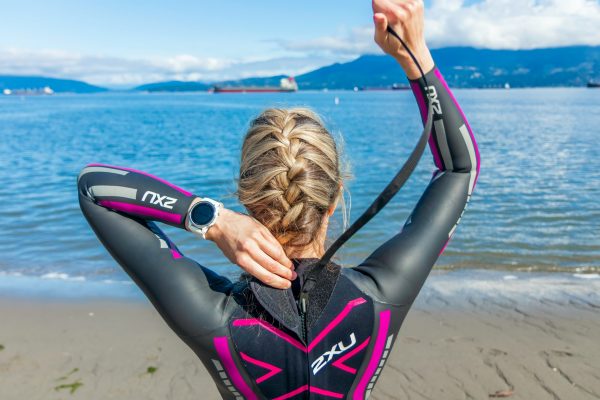
Best Triathlon Wetsuit
Buyer's Guide
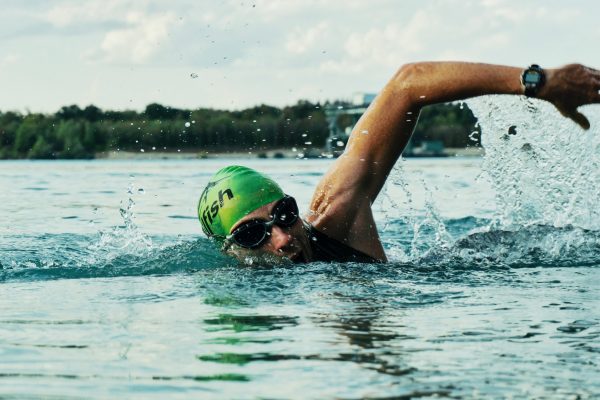
Best Triathlon Watch
Buyer's guide
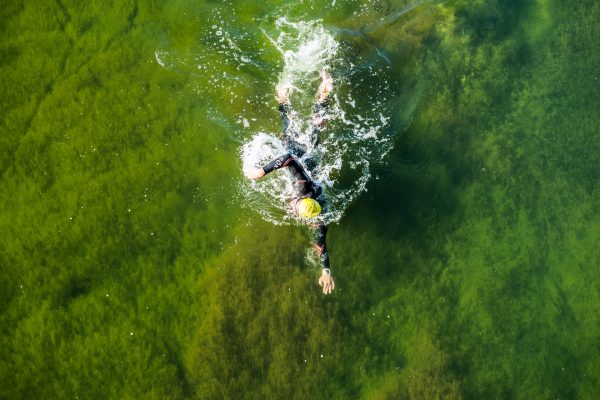
Triathlon wetsuit care
Look after your kit
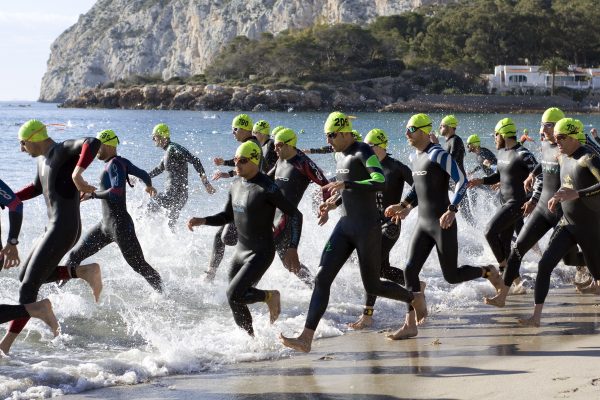
How long is a triathlon?
Triathlon distances explained
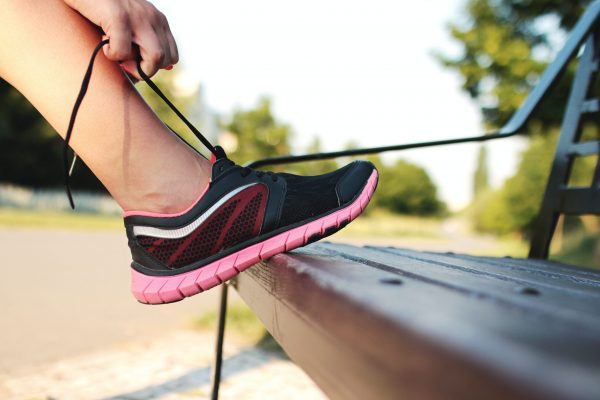
What to wear in a triathlon?
Essential triathlon kit
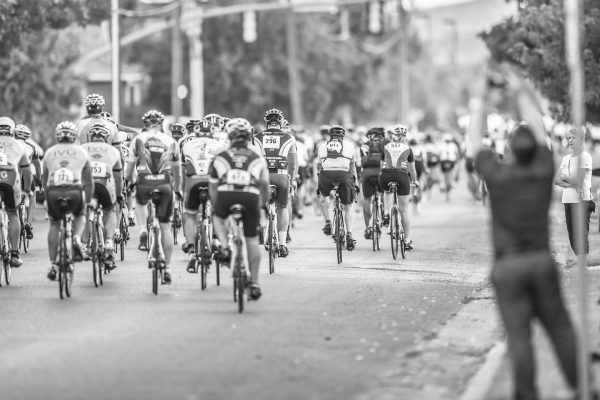
How to train for your first triathlon
training advice
Email: contact@smarttriathlete.com